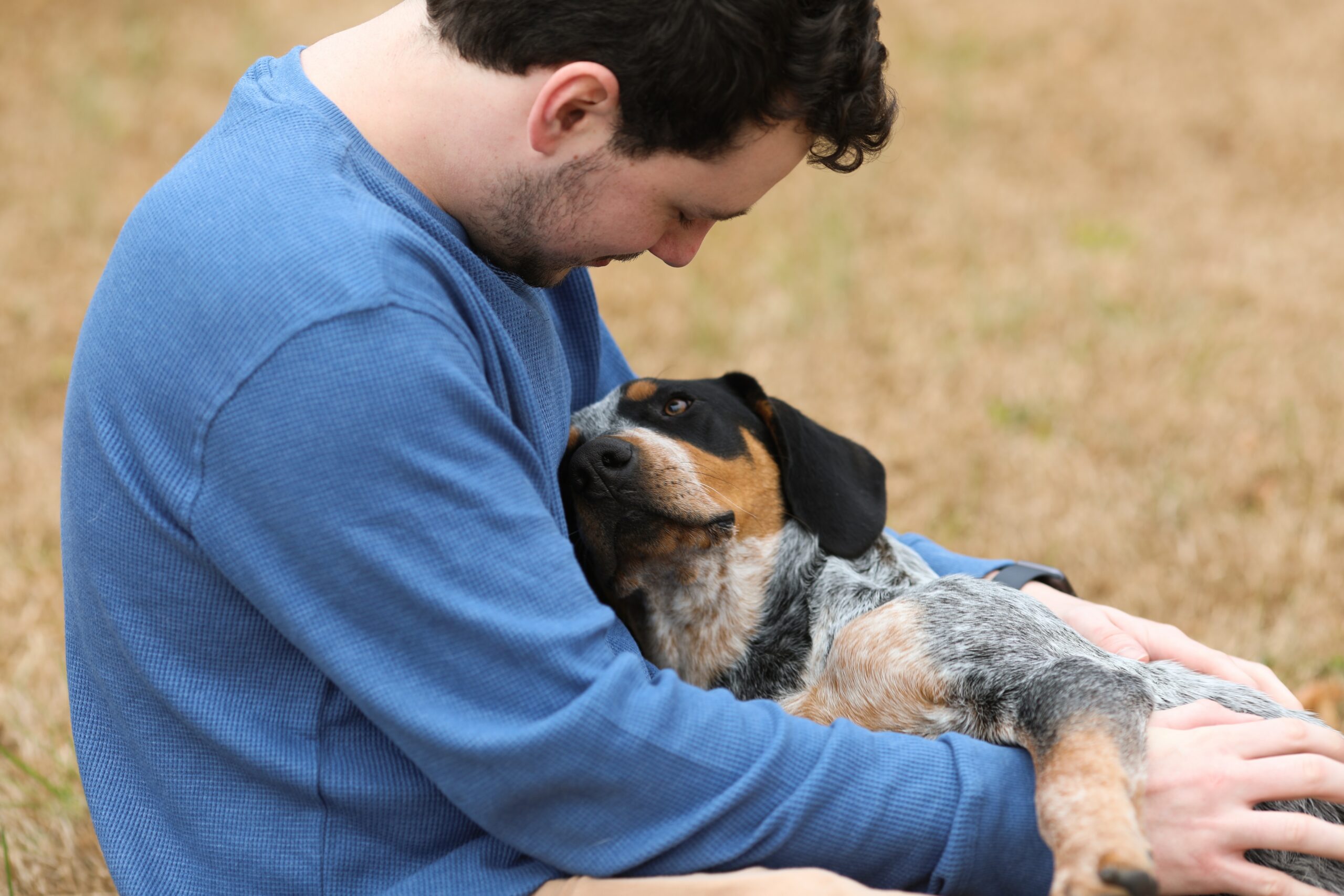Pets and Their People Blog
Fear Is an Emotion, Not a Behavior
There’s an old saw in the dog world that just won’t go away: “Don’t pet or comfort your dog when she’s acting scared—you’re just reinforcing that behavior.”
But fear is not a behavior to be reinforced – or punished. It’s an emotion, like excitement, affection, playfulness, and sadness.

Behaviors and emotions are tied together in important ways, but they are not the same, and require different approaches when they become a problem for your pet.
Behaviors are Learned – Emotions are Involuntary
Take for example the fallacy that forcing a fearful dog into “socializing” with people or dogs will cause them to eventually overcome their fear. We’ve all seen well-meaning dog owners pulling their new, terrified puppy from under the furniture and placing her in the lap of a visiting stranger. Or holding their puppy on a tight leash while strange dogs come up to sniff (or harass) the puppy who is struggling to get away. The puppy is likely to be trembling with fear, tail between the legs, and may well snap or bite.
Certainly, dogs will learn to avoid things that have frightened or harmed them in the past (grasping children, stinging wasps, boisterous dogs). But fear itself is not a learned behavior that the animal can choose to “perform” or not—it is a neurobiological and involuntary response.
Treating emotions like fear and anxiety as “behaviors” or insisting that animals must “face and overcome” their feelings causes a lot of psychological stress and damage to pet dogs, sometimes leading to greater behavioral problems, such as submissive urination or fear-aggression—leading causes of dogs being relinquished to shelters (and potentially losing their lives).
How to Help Your Fearful, Shy, or Anxious Dog
- If your dog is fearful or anxious (often labeled “shy”), remember that your dog is not giving you a hard time, they’re having a hard time. Help them. Comfort them. Punishing fear-induced behavior will only make the problem worse by creating even more negative associations toward the “scary thing.”
- Above all, never force your dog to engage with a human, animal, or environment when their body language is telling you, “Please… No.”
- Let them escape or initiate contact on their terms, and reward curiosity with praise and treats.
That is the way to build confidence and curiosity in your best friend!
About the Author
Sue Kocher (Pet Professional Guild member) has been a force-free professional dog trainer for over 20 years. She provides in-person and Zoom coaching in Hendersonville, North Carolina, USA. Sue is on Facebook as Hendo Dogs (web site pending!), and spends her free time training and competing with her two dogs, and hiking in the mountains.


